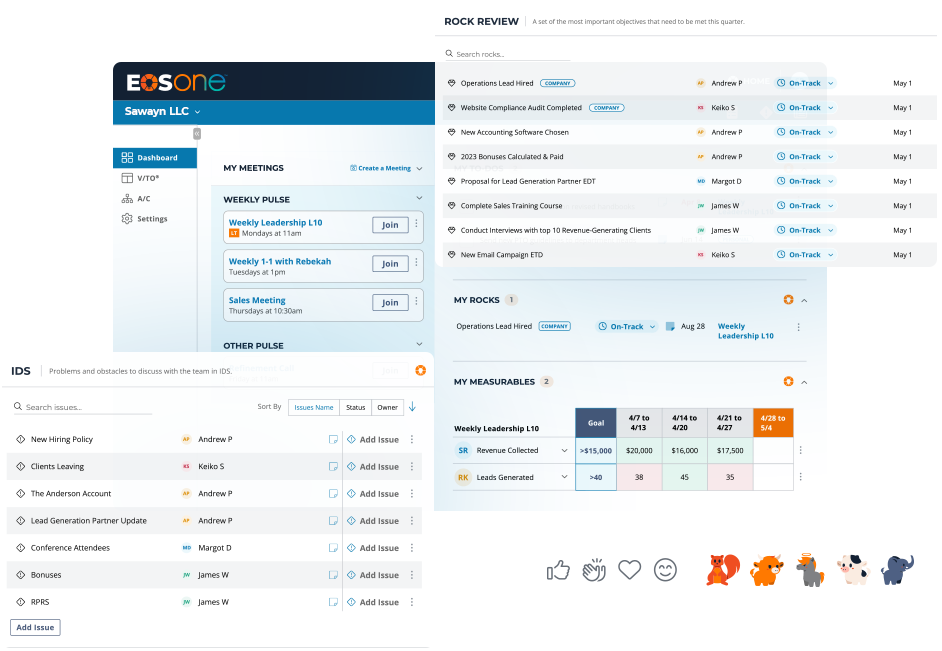The Cost of Waiting too Long: A Lesson from an EOS Implementer
In over five years as an EOS Implementer, I’ve seen first-hand how having the right people in the right seats can make or break a company. I’ve worked with many clients where the same issue is raised again and again as to the fit of a person in a seat. Often, the end result is a termination, and I can safely say that I’ve never heard a team say they wish they’d waited longer—instead, the common refrain is, “Why didn’t we let go of them sooner?” A leadership team’s reluctance to make the tough decision to let go of an underperforming employee can have unexpected and costly consequences.
Here’s a story about one of my clients who waited too long to fire the wrong person, and the painful lesson they learned as a result.
The Warning Signs
My client, growing rapidly, had recently hired ‘Jake’ for a key role. Soon after, Jake’s name surfaced repeatedly on the Issues List: missed deadlines, subpar work, and a pattern of poor alignment with core values. The leadership team was reluctant to make a call. “He just needs time,” they’d say. But as the months dragged on, Jake’s lack of performance became a burden, particularly for Sarah—a key team member who carried much of his slack.
The Breaking Point
Despite repeated discussions and my strong encouragement to address this seat, the team hesitated to act. Soon, Sarah submitted her resignation, citing frustration with constantly picking up the slack for Jake. The leadership team was hurt and stunned. Sarah had been with the company for years and was central to its success. Losing her was a huge blow, and the team immediately felt the impact of her departure. Sarah’s energy, knowledge, and contributions felt irreplaceable, and now they were left scrambling to pick up the pieces she left behind. She was clear about her reasons – tired of covering for Jake, with no leadership being taken to resolve the situation – and had decided to seek a role where her efforts would be fully valued. My client was devastated, realizing too late the impact of delay.
Key EOS Lessons for Leaders
This story underscores three vital EOS principles that every leader should remember:
- Don’t Ignore the PA and GWC:
The EOS People Analyzer and GWC framework aren’t just checklists—they’re essential tools to ensure each team member fits with your values and has the right capacity for their role. When someone’s performance consistently raises red flags, act on it.
- Protect Your High Performers:
Holding onto the wrong person often drives others away. High performers thrive in environments where everyone pulls their weight. When they’re forced to carry someone else, they quickly feel undervalued and may seek a different workplace where they feel truly appreciated.
- Don’t Let Issues Fester:
If a name reappears on the Issues List, it’s a sign that action is needed. Sometimes, a timely decision to let someone go is the kindest outcome for everyone involved.
Moving Forward
Delaying a necessary termination can harm team morale and progress, often at the expense of your top talent. While it’s never easy to let someone go, timely action protects your culture, strengthens your team, and keeps your organization moving forward.
If you’re stuck and need assistance, I’m here to help.



